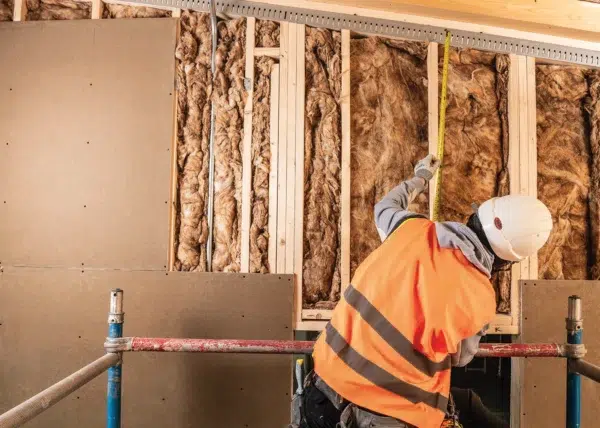What You Need to Know About Planning Obligations
Sometimes it’s necessary to pay extra sums of money to your local council to secure planning permission via what is known as a planning obligation.
This will lead to additional costs before any work even starts on site, plus it can cause delays to the planning process.
So the question is, what does a planning obligation mean for your project – is it helpful or a burden, can its impact be reduced or avoided, can you get rid of it and what if you’re buying a property that already has one attached to it?
Planning Obligations: The basics
Planning obligations exist to help reduce the impact of projects deemed to be unacceptable development. They are a formal, legally-binding document that requires you to pay money to the council (known as planning contributions) or to do/not do something specific to your project.
This can be instigated in the form of an agreement between you and the Local Authority (LA) or through what’s known as a unilateral undertaking, which is where the homeowner puts forward a simplified application that highlights the planning obligations without the prior agreement of the council.
Planning obligations are also sometimes referred to as a planning agreement, Section 106 agreement, Article 40 in Northern Ireland or Section 75 in Scotland.
Obligations are attached to the land rather than the people who sign them, meaning they can have long-lasting implications for any property they affect.
Fortunately for small-scale housing proposals in England, the government is opposed to councils demanding planning contributions towards affordable housing and certain tariff style charges towards infrastructure.
In fact, some local authorities have kicked back at the government’s stance, resulting in several court cases seeking to settle the matter. However, recently updated policy has confirmed that any schemes smaller than 10 units (or five units or under in some rural areas) or 1,000m2 are exempt from these kinds of charges.
What projects need a planning obligationThere’s no restriction on what can be covered by a planning obligation, but government guidance says councils can impose them if they are ‘necessary to make the development acceptable in planning terms, directly related to the development, and fairly and reasonably related (to it) in scale and kind’. Obligations are usually signed before a planning permission is issued, after the council has already agreed the application is acceptable subject to an obligation being put in place. If you don’t like the terms or are unwilling to sign one (and the grant of permission is dependent on the obligation) your planning application will be refused. This will give you the opportunity to either try to renegotiate a more acceptable obligation with the council, then resubmit, or to appeal the refusal. If you are appealing an obligation, you must explain why it is inappropriate or put forward what you think is a reasonable basis for an obligation. This should be done in the form of a unilateral undertaking, as an inspector can’t set the amount to be paid or terms. The appeal would be decided purely on its planning merits, taking account of any obligation submitted. |
The Community Infrastructure Levy (CIL) is designed to replace planning obligations in most circumstances. This allows councils to impose a fee to help support local development, but self-builders can claim exemption from it.
However, not all councils have introduced CIL and even if they have, they may still impose a planning obligation if a matter falls outside the CIL bracket. If you do need a planning obligation then you will be expected to bear any solicitor fees you incur in getting the documentation drawn up, and you’re usually required to pay the council’s legal costs for their side of it, too.
When it’s good
Entering into a planning obligation can be a way of overcoming planning issues or a way of guaranteeing some benefit from your project that might outweigh a council’s concerns.
For example, in a recent appeal decision, the inspector stated that he couldn’t attach much weight to the applicants’ assertion that they would self-build – despite the fact they wanted to downsize to a new house in their garden and had already filled in the Community Infrastructure Levy self-build exemption claim form.
He suggested a unilateral undertaking would confirm their status as self-builders – and thus enable their project. This proves it’s a worthwhile precaution to confirm your intentions to self-build with a legal agreement.
Similarly, where you’re applying for a self-contained annex for family members to live in, a unilateral undertaking restricting occupancy and/or preventing the annex being let or sold separately from the house could help you secure permission.
Alternatively, if you’re replacing one house with another but want to retain the original property during the build, a planning obligation can help reassure the council that you’re not going to try to keep both properties once the new dwelling is complete.
When it’s bad
The most common issues concerning planning obligations are the legal costs involved and the delays the process incurs. Council planning departments are under pressure to get applications dealt with within target time periods – eight weeks in most cases.
But once you go over that and are waiting for the council’s legal department to produce a draft obligation or to review one you have sent them, you’re in an administrative no man’s land.
Weeks or months can slip by and no amount of cajoling can help to move matters on. Some local authorities produce planning obligation templates for you to fill in, but given the significance of such documents it’s still advisable to have your solicitor give them a once over.
Need more advice about different aspects of your project?Build It’s Self Build Virtual Training will give you the detailed know-how to successfully realise your dream home. Our interactive courses are presented by Build It’s expert contributors and designed to give you the key nuggets of knowledge you need – all from the comfort of your own home. Covering everything from finding land to planning permission and design, our courses take place online and allow for audience participation and experience sharing. Use the code TWENTY for 20% off. |
While the days of councils charging absurdly large sums of money for single dwelling planning permissions may be over, there are still situations where hefty fees are sought if permission is to be granted.
One of these is where the council wants contributions to mitigate the impact of a development on rare and protected species and habitats, found in Special Protection Areas (SPAs). While some of these restricted spaces are in sparsely populated estuary or upland zones, others are found in densely populated regions where many self-build projects can be affected.
Here’s one example of where a planning obligation hasn’t been a great experience for self-builders: a local authority (LA) recently charged an applicant £670 to fill in a pro-forma planning obligation for a project close to the Thames Basin Heaths. This also required an up-front payment of £5,000. The planning application was later refused as the council thought the house would be out of character.
The applicant disagreed with this and decided to appeal. But an appeal couldn’t be decided without a signed planning obligation in place, so the applicant was then charged another £670 so the LA could change the reference on the obligation from planning application to appeal. Unfortunately they had no choice but to cough up what was an entirely unjustified sum.
Avoiding & removing obligations
In cases where the cost of a planning obligation would jeopardise the viability of a project, it’s possible to negotiate a reduced sum. Your figures must be robust though – it’s not a matter of whether you personally can or can’t afford a particular fee, rather, whether the project itself would be jeopardised by it. You might need to get a valuer in, possibly with input from your architect or a quantity surveyor to ensure the case would stand up to close scrutiny.
You can apply to the council to have planning obligations amended or removed after it has been in place for five years, although they can be removed or altered by agreement with the council at any time. If you’re buying a property that’s subject to a planning obligation, it’s best to get your solicitor to consider its terms carefully and don’t assume you’ll be able to change or remove it automatically. For example, an agricultural occupancy restriction (or agricultural tie) is sometimes dealt with by way of an obligation as well as conditions attached to a planning permission.
Image: Mark and Julia Jones had to agree to a Section 106 planning obligation before self-builders became exempt. Negotiations on this dragged the planning process out and delayed the start to the project – follow their diary about building a Welsh Oak Frame house
























































































 Login/register to save Article for later
Login/register to save Article for later












